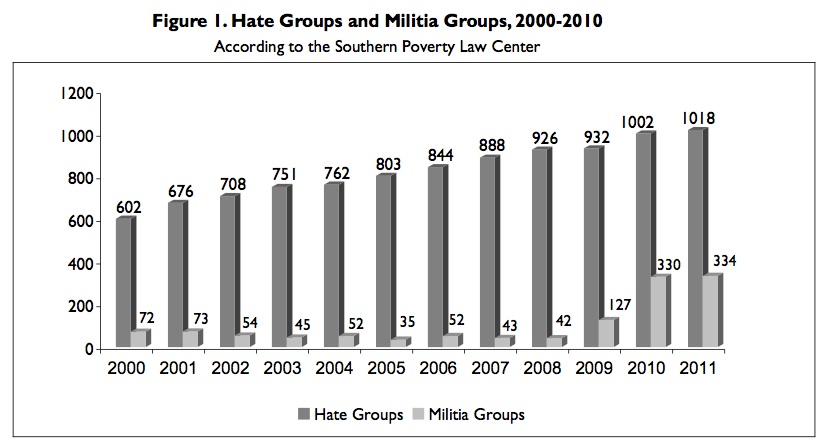A recent Congressional report on domestic terrorism examines the government’s crackdown on animal rights and environmental activists, and asks members of Congress to question why the Animal Enterprise Terrorism Act singles out political activists as terrorists when they have not harmed anyone.
The report, “The Domestic Terrorist Threat: Background and Issues for Congress” (739K, pdf)Â was prepared by the Congressional Research Service, which is the government agency tasked with creating policy and legal analysis for the U.S. Congress.
CRS reports are bipartisan, but they often provide “policy considerations” that members of Congress are urged to critically investigate (more on those in a moment). In making the case for those policy considerations, the report draws from Green Is the New Red. For instance, in a section titled, “A Serious Domestic Concern or ‘Green Scare?'” the report cites the book and says:
…one observer emphasizes that while activities linked to U.S.-based animal rights extremists have caused significant property damage, none of these criminal acts has physically harmed people. This critic suggests that describing vandalism or arson as terrorism and not ordinary crime dampens constitutionally protected protest activity by people who support animal rights or radical environmentalism but do not engage in criminal activity. In essence, this position argues that the U.S. government is encouraging a “green scare† by labeling the activity of movements such as the ALF and ELF as terrorism or extremism. (emphasis added)
The report also cites my reporting on the SHAC 7 case and the AETA 4 case, along with my article in the Vermont Law Review and a front-page story in The Washington Post.Â
Right Wing Violence Vs. Eco Activism
The report details the history of violence by right-wing groups and anti-abortion extremists, and notes the contrast to animal rights and environmental groups. For example, there have been 8 anti-abortion murders since 1993, there were 133 racist skinhead groups active in the United States last year, and militia groups have seen a “resurgence.” A group in Georgia was arrested in 2011 for plotting murders, the use of toxic agents, and assassinations. Another group, the Alaska Peacemaker’s Militia, had a plot they codenamed “241” because they wanted to kill 2 government officials for every 1 militia member killed in their operations.
Congress Should Address “Inconsistencies” in Terminology
The report notes several points that Congress should consider, including the inconsistent use of “terrorism” rhetoric by law enforcement. When it comes to animal rights, environmental, and anarchist groups, the words “terrorism” and “extremism” are used interchangeably, and the “threat” is never defined. This “may lead to inconsistencies in the development and application of the law in the domestic terrorism arena.”
The report says the Animal Enterprise Terrorism Act is an example of the danger this poses:
“…policymakers may ponder why a specific terrorism statute covers ideologically motivated attacks against businesses that involve animals, while there are no other domestic terrorism statutes as narrow in their purview covering a particular type of target and crime.”
Checks and Balances Needed
Perhaps the most important recommendation put forward in this report is that Congress should demand to know:
| “How does a particular brand of dissent become…a ‘domestic terrorism’ threat?” |
How does a particular brand of dissent become ripe for description by DOJ and the FBI as driving a “domestic terrorism threat”?
What criteria are involved in such a process?
How many crimes or plots attributed to a specific ideology have to occur to stimulate the identification of a new extremist threat?
Is the severity of the crimes linked to an ideology taken into consideration?
At what point do ideologically driven domestic terrorism threats cease to exist?
Should there be a means for public petitioning of the government to eliminate various threats as investigative priorities?
The only way to answer these important questions is for the FBI to consistently provide accurate information on the specific activity that is being investigated as terrorism. Government oversight and reform is impossible without this accountability from law enforcement.
Steps in the Right Direction
The Congressional report is well-researched and fair, but it does include a troubling policy recommendation to create a formalized list of “domestic terrorist threats” parallel to the list of international terrorist groups maintained by the State Department. Such a list would erase ambiguity regarding which groups are officially terrorists, but it would also allow for the criminalization of so-called “material support” of those groups. This would open the floodgates for investigating and prosecuting political activists.
For example, the Animal Liberation Front, Earth Liberation Front, Stop Huntingdon Animal Cruelty and possibly Earth First would be on this list. And I have no doubt whatsoever that “material support” statutes would be used to criminalize above-ground activists who publicly support them through magazines, videos, and websites. The author of the report acknowledges the potential civil liberties abuses inherent in such a proposal, yet encourages lawmakers to consider the idea.
Nevertheless, the questions posed in this report are promising developments. It’s rewarding to see my book and website referenced in this document, but it’s not without irony: as one government agency is citing my work in official reports to Congress, other government agencies are surveilling and monitoring it, and the FBI has refused to comply with a FOIA request for files on the book because they are the subject of a “pending or prospective law enforcement proceeding.”
Clearly, we have a long way to go.
